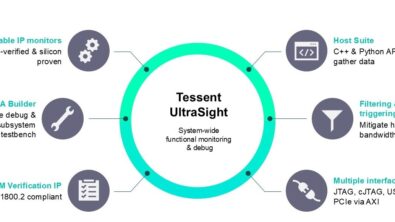A Full Life-Cycle View of Automotive Test
By Steve Pateras, Mentor Graphics
Ensuring safety and reliability of automotive ICs takes a full life-cycle view of automotive test that includes test quality, in-system test, and analysis of field returns.
Once upon a time, cup holders and trunk space were big factors in deciding on a new car. Today, car buyers want all the electronic bells and whistles that add to the safety, comfort, and connectedness are more important. Electronics account for about 40% of the total cost of a typical car, and up to 75% for electric and hybrid models. This changes the landscape for car makers, who now need to source lots of very high quality and high reliability automotive electronics, as driven by the ISO 26262 standard. Ensuring high quality and reliability in the electronics is an issue of safety to be sure, but also of cost. Faulty dashboard electronics can reduce sales and increase maintenance costs. So, makers of automotive ICs must ensure high-quality manufacturing test, provide mechanisms for continuous in-system test, and be able to pull out failing parts and quickly find the root cause of the problem.
The triad strategy for automotive ICs includes:
High-quality manufacturing test using Cell-aware ATPG, which targets specific shorts and opens internal to each library cell and significantly improves defect detection. Automotive ICs also require analog/mixed-signal test, which first requires analog fault simulation to measure the fault coverage achieved. New techniques speed the analog simulation time by several orders of magnitude over simulating each defect one at a time on the flat netlist.
In-system test, which checks operation of an IC during power-up after manufacturing and during field operation. This involves logic BIST. The on-chip logic for scan ATPG and BIST can be combined for efficiency.
Field return analysis, which calls for quickly and accurately finding the source of IC failures.
This is done with scan test diagnosis using ATPG test patterns, the design description, and physical IC design information. This diagnosis technology extends to finding transistor-level defects.
These three types of testing for automotive ICs provide a strong base for designers to achieve ISO 26262 quality and reliability requirements.
For more details on test technologies for meeting the ISO 26262 standard for automotive ICs, download this Mentor whitepaper
Author
Stephen Pateras is product marketing director within the Mentor Graphics Silicon Test Solutions group and has responsibility for the company’s ATPG and DFT products.



